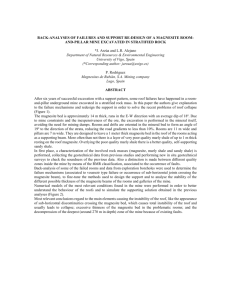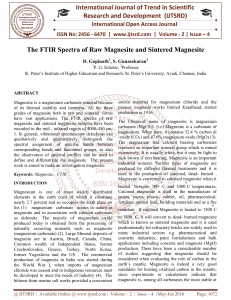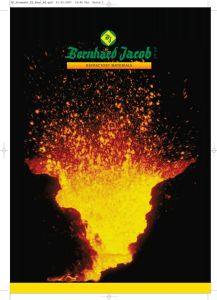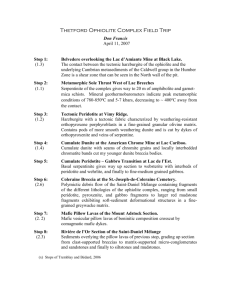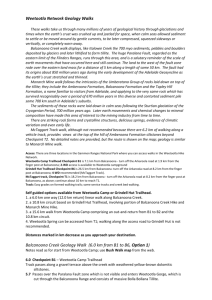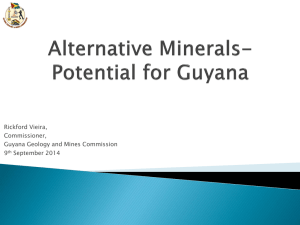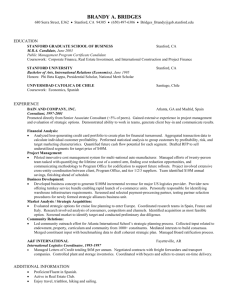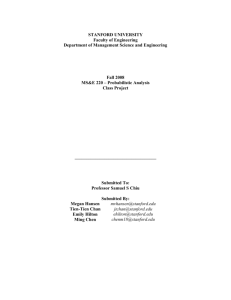Large magnesite vein and fracture formation in peridotite rocks
advertisement
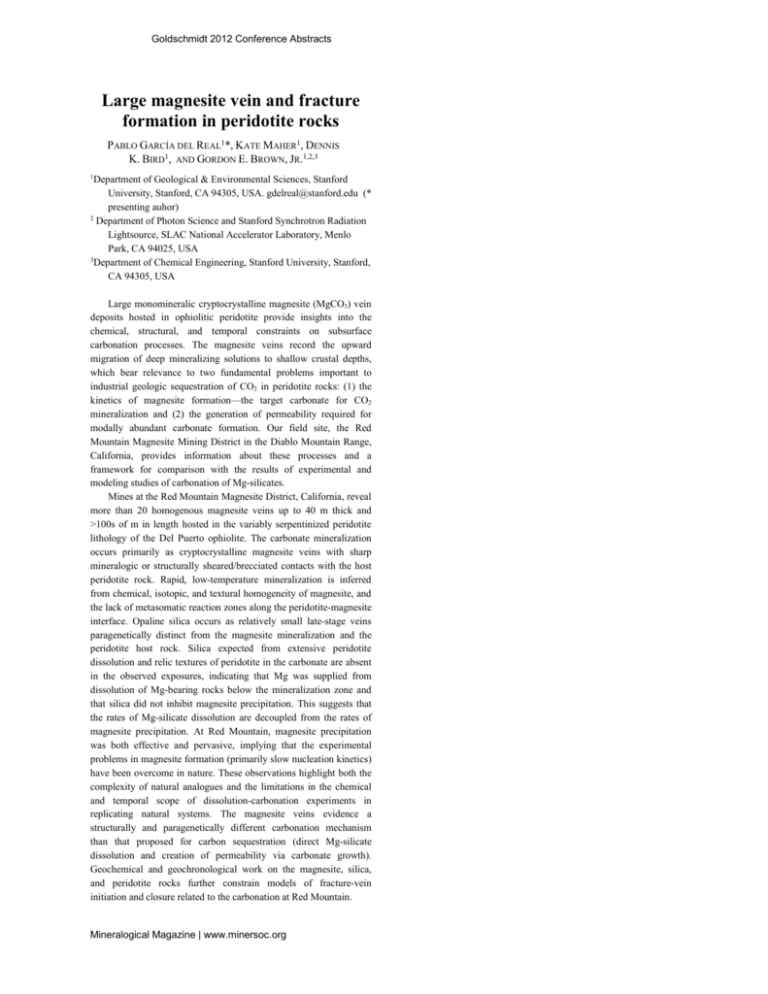
Goldschmidt 2012 Conference Abstracts Large magnesite vein and fracture formation in peridotite rocks PABLO GARCÍA DEL REAL1*, KATE MAHER1, DENNIS K. BIRD1, AND GORDON E. BROWN, JR.1,2,3 1 Department of Geological & Environmental Sciences, Stanford University, Stanford, CA 94305, USA. gdelreal@stanford.edu (* presenting auhor) 2 Department of Photon Science and Stanford Synchrotron Radiation Lightsource, SLAC National Accelerator Laboratory, Menlo Park, CA 94025, USA 3 Department of Chemical Engineering, Stanford University, Stanford, CA 94305, USA Large monomineralic cryptocrystalline magnesite (MgCO3) vein deposits hosted in ophiolitic peridotite provide insights into the chemical, structural, and temporal constraints on subsurface carbonation processes. The magnesite veins record the upward migration of deep mineralizing solutions to shallow crustal depths, which bear relevance to two fundamental problems important to industrial geologic sequestration of CO2 in peridotite rocks: (1) the kinetics of magnesite formation—the target carbonate for CO2 mineralization and (2) the generation of permeability required for modally abundant carbonate formation. Our field site, the Red Mountain Magnesite Mining District in the Diablo Mountain Range, California, provides information about these processes and a framework for comparison with the results of experimental and modeling studies of carbonation of Mg-silicates. Mines at the Red Mountain Magnesite District, California, reveal more than 20 homogenous magnesite veins up to 40 m thick and >100s of m in length hosted in the variably serpentinized peridotite lithology of the Del Puerto ophiolite. The carbonate mineralization occurs primarily as cryptocrystalline magnesite veins with sharp mineralogic or structurally sheared/brecciated contacts with the host peridotite rock. Rapid, low-temperature mineralization is inferred from chemical, isotopic, and textural homogeneity of magnesite, and the lack of metasomatic reaction zones along the peridotite-magnesite interface. Opaline silica occurs as relatively small late-stage veins paragenetically distinct from the magnesite mineralization and the peridotite host rock. Silica expected from extensive peridotite dissolution and relic textures of peridotite in the carbonate are absent in the observed exposures, indicating that Mg was supplied from dissolution of Mg-bearing rocks below the mineralization zone and that silica did not inhibit magnesite precipitation. This suggests that the rates of Mg-silicate dissolution are decoupled from the rates of magnesite precipitation. At Red Mountain, magnesite precipitation was both effective and pervasive, implying that the experimental problems in magnesite formation (primarily slow nucleation kinetics) have been overcome in nature. These observations highlight both the complexity of natural analogues and the limitations in the chemical and temporal scope of dissolution-carbonation experiments in replicating natural systems. The magnesite veins evidence a structurally and paragenetically different carbonation mechanism than that proposed for carbon sequestration (direct Mg-silicate dissolution and creation of permeability via carbonate growth). Geochemical and geochronological work on the magnesite, silica, and peridotite rocks further constrain models of fracture-vein initiation and closure related to the carbonation at Red Mountain. Mineralogical Magazine | www.minersoc.org
